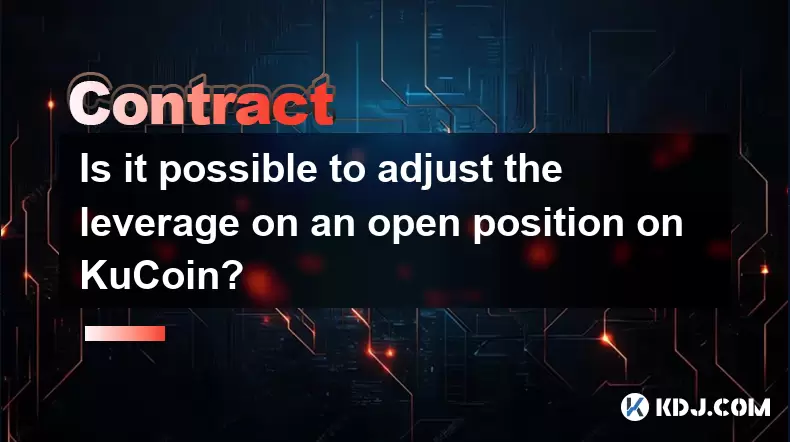-
 Bitcoin
Bitcoin $117600
0.25% -
 Ethereum
Ethereum $4424
0.10% -
 XRP
XRP $3.101
0.50% -
 Tether USDt
Tether USDt $1.001
-0.01% -
 BNB
BNB $836.2
1.26% -
 Solana
Solana $188.8
2.11% -
 USDC
USDC $1.000
0.01% -
 Dogecoin
Dogecoin $0.2301
0.57% -
 TRON
TRON $0.3485
-1.00% -
 Cardano
Cardano $0.9209
-1.34% -
 Hyperliquid
Hyperliquid $46.72
-1.19% -
 Chainlink
Chainlink $22.62
4.84% -
 Stellar
Stellar $0.4275
-0.38% -
 Sui
Sui $3.761
1.91% -
 Bitcoin Cash
Bitcoin Cash $586.7
-0.25% -
 Ethena USDe
Ethena USDe $1.001
0.01% -
 Hedera
Hedera $0.2510
2.06% -
 Avalanche
Avalanche $24.21
2.22% -
 Litecoin
Litecoin $119.7
1.07% -
 Toncoin
Toncoin $3.450
1.06% -
 UNUS SED LEO
UNUS SED LEO $9.411
-0.93% -
 Shiba Inu
Shiba Inu $0.00001298
1.20% -
 Uniswap
Uniswap $10.98
3.25% -
 Polkadot
Polkadot $3.961
2.16% -
 Dai
Dai $1.000
0.00% -
 Bitget Token
Bitget Token $4.642
0.95% -
 Cronos
Cronos $0.1514
0.57% -
 Ethena
Ethena $0.7290
3.78% -
 Monero
Monero $254.1
7.69% -
 Pepe
Pepe $0.00001102
2.47%
What is the liquidity of SUI contract trading? Will large transactions slip?
Higher liquidity in SUI contract trading allows for large transactions with minimal slippage, influenced by trading volume, order book depth, and bid-ask spread.
May 09, 2025 at 02:35 pm

The liquidity of SUI contract trading is a crucial factor that impacts the efficiency and cost-effectiveness of trading this particular cryptocurrency. Liquidity refers to the ease with which an asset can be bought or sold in the market without causing a significant change in its price. In the context of SUI contract trading, liquidity is determined by the volume of SUI contracts available on trading platforms and the depth of the order book. Higher liquidity means that traders can execute large transactions with minimal slippage, which is the difference between the expected price of a trade and the price at which the trade is executed.
To understand the liquidity of SUI contract trading, it's essential to consider several key metrics. These include trading volume, order book depth, and bid-ask spread. Trading volume represents the total number of SUI contracts traded over a specific period, typically measured in daily or hourly intervals. A higher trading volume generally indicates better liquidity, as it suggests more market participants are actively trading SUI contracts. Order book depth refers to the number of buy and sell orders at various price levels. A deep order book, with a large number of orders at different price points, can absorb large trades without significant price impact. Bid-ask spread is the difference between the highest price a buyer is willing to pay (bid) and the lowest price a seller is willing to accept (ask). A narrower bid-ask spread indicates higher liquidity, as it means traders can buy and sell SUI contracts at prices closer to the market rate.
Factors Affecting SUI Contract Liquidity
Several factors can influence the liquidity of SUI contract trading. Market sentiment plays a significant role, as positive or negative news about SUI can attract or deter traders, affecting the trading volume and order book depth. Regulatory changes can also impact liquidity, as new regulations may encourage or discourage market participants from trading SUI contracts. Market maker activity is another crucial factor, as market makers provide liquidity by continuously buying and selling SUI contracts, narrowing the bid-ask spread and maintaining a deep order book. Additionally, exchange-specific factors such as trading fees, user interface, and security measures can influence the attractiveness of a platform for SUI contract trading, thereby affecting overall liquidity.
Impact of Large Transactions on SUI Contract Trading
Large transactions can indeed cause slippage in SUI contract trading, especially if the liquidity is not sufficient to absorb the trade without significant price impact. Slippage occurs when the executed price of a trade differs from the expected price, often due to a lack of liquidity at the desired price level. For example, if a trader wants to buy a large number of SUI contracts at the current market price, but there are not enough sellers at that price, the trade may be executed at a higher price, resulting in slippage. The extent of slippage depends on the size of the trade relative to the available liquidity and the depth of the order book.
To minimize slippage when executing large transactions in SUI contract trading, traders can employ several strategies. One approach is to split large orders into smaller ones, which can be executed over time to reduce the impact on the market. This strategy, known as order splitting, allows traders to gradually buy or sell SUI contracts without causing significant price movements. Another strategy is to use limit orders, which allow traders to specify the maximum price they are willing to pay or the minimum price they are willing to accept. By using limit orders, traders can avoid executing trades at unfavorable prices, although there is a risk that the order may not be filled if the market moves away from the specified price.
Assessing SUI Contract Liquidity on Trading Platforms
To assess the liquidity of SUI contract trading on specific platforms, traders can use various tools and metrics. Trading volume charts provide a visual representation of the number of SUI contracts traded over time, helping traders identify periods of high and low liquidity. Order book visualizations display the current buy and sell orders at different price levels, allowing traders to gauge the depth of the market. Liquidity indicators, such as the bid-ask spread and the market depth, can be calculated using data from the order book. Many trading platforms also offer liquidity metrics that aggregate these factors into a single measure of liquidity, making it easier for traders to compare the liquidity of SUI contract trading across different platforms.
Strategies for Trading SUI Contracts with High Liquidity
To take advantage of high liquidity in SUI contract trading, traders can employ several strategies. One strategy is to use market orders during periods of high trading volume, as these orders are executed immediately at the best available price, minimizing the risk of slippage. Another strategy is to monitor liquidity indicators and adjust trading strategies accordingly. For example, if the bid-ask spread is narrow and the order book is deep, traders may feel more confident in executing larger trades. Using trading bots can also be beneficial, as these automated systems can quickly respond to changes in liquidity and execute trades at optimal prices. Additionally, diversifying across multiple trading platforms can help traders access higher liquidity and reduce the risk of slippage.
Practical Steps to Execute Large SUI Contract Transactions
When executing large transactions in SUI contract trading, it's important to follow a systematic approach to minimize slippage and maximize the chances of successful trades. Here are the practical steps traders can take:
Analyze the market: Before executing a large transaction, analyze the current market conditions, including trading volume, order book depth, and bid-ask spread. This analysis will help you determine the best time to execute the trade.
Choose the right platform: Select a trading platform with high liquidity for SUI contract trading. Compare liquidity metrics across different platforms to find the one that best suits your trading needs.
Split the order: Divide the large transaction into smaller orders to reduce the impact on the market. For example, if you want to buy 10,000 SUI contracts, you could split this into ten orders of 1,000 contracts each.
Use limit orders: Set limit orders at favorable price levels to avoid executing trades at unfavorable prices. For example, if the current market price is $10 per SUI contract, you could set a limit order to buy at $9.90.
Monitor the trade: Keep an eye on the trade as it executes, adjusting the strategy if necessary. If you notice significant slippage, consider pausing the trade and reassessing the market conditions.
Review the results: After the trade is complete, review the results to understand the impact of liquidity on the transaction. Analyze the slippage and consider how you can improve your trading strategy in the future.
Frequently Asked Questions
Q: How can I measure the liquidity of SUI contract trading on a specific platform?
A: To measure the liquidity of SUI contract trading on a specific platform, you can use several metrics. Trading volume charts show the number of SUI contracts traded over time, while order book visualizations display the current buy and sell orders at different price levels. Liquidity indicators such as the bid-ask spread and market depth can be calculated using data from the order book. Many platforms also provide liquidity metrics that aggregate these factors into a single measure of liquidity.
Q: What are the risks of trading SUI contracts with low liquidity?
A: Trading SUI contracts with low liquidity carries several risks. Slippage is a significant risk, as large transactions can cause the price to move unfavorably, resulting in trades being executed at prices different from the expected price. Higher trading costs are another risk, as the bid-ask spread may be wider in low-liquidity markets, increasing the cost of buying and selling SUI contracts. Additionally, difficulty in executing trades can be a challenge, as there may not be enough buyers or sellers to fill orders at desired price levels.
Q: Can I improve the liquidity of SUI contract trading on a specific platform?
A: While individual traders cannot directly improve the liquidity of SUI contract trading on a platform, they can take steps to contribute to overall liquidity. Trading actively and providing liquidity through market making can help increase trading volume and order book depth. Encouraging other traders to join the platform by sharing positive experiences and referring friends can also boost liquidity. Additionally, providing feedback to the platform's developers about liquidity issues can lead to improvements in the trading environment.
Q: How does the time of day affect the liquidity of SUI contract trading?
A: The time of day can significantly impact the liquidity of SUI contract trading, as trading activity often follows daily patterns. Peak trading hours, typically during the overlap of major financial markets, tend to have higher liquidity due to increased trading volume and order book depth. Off-peak hours, such as late at night or early in the morning, may have lower liquidity, as fewer traders are active. To maximize liquidity, it's advisable to trade SUI contracts during peak hours when possible.
Disclaimer:info@kdj.com
The information provided is not trading advice. kdj.com does not assume any responsibility for any investments made based on the information provided in this article. Cryptocurrencies are highly volatile and it is highly recommended that you invest with caution after thorough research!
If you believe that the content used on this website infringes your copyright, please contact us immediately (info@kdj.com) and we will delete it promptly.
- Kazakhstan's Crypto Leap: Bitcoin ETF and Central Asia's Digital Finance Future
- 2025-08-13 12:45:19
- BlockDAG Presale Blazes Past $371M: Fundraising Frenzy Fuels Crypto Sensation
- 2025-08-13 13:05:21
- Meme Coins: Chasing the 2025 Surge – Which Will Moonshot?
- 2025-08-13 10:25:23
- Bitcoin's Wild Ride: Rally, Pullback, and What's Next
- 2025-08-13 10:25:23
- Bitcoin, Bitmax, and Institutional Demand: A New Era of Crypto Investment
- 2025-08-13 10:45:12
- Solana, ROAM, and Airdrops: What's the Buzz in 2025?
- 2025-08-13 11:35:13
Related knowledge

Is it possible to adjust the leverage on an open position on KuCoin?
Aug 09,2025 at 08:21pm
Understanding Leverage in KuCoin Futures TradingLeverage in KuCoin Futures allows traders to amplify their exposure to price movements by borrowing fu...

What cryptocurrencies are supported as collateral on KuCoin Futures?
Aug 11,2025 at 04:21am
Overview of KuCoin Futures and Collateral MechanismKuCoin Futures is a derivatives trading platform that allows users to trade perpetual and delivery ...

What is the difference between realized and unrealized PNL on KuCoin?
Aug 09,2025 at 01:49am
Understanding Realized and Unrealized PNL on KuCoinWhen trading on KuCoin, especially in futures and perpetual contracts, understanding the distinctio...

What different order types are available to use on KuCoin Futures?
Aug 13,2025 at 11:35am
Understanding Order Types on KuCoin FuturesKuCoin Futures offers a comprehensive range of order types to accommodate different trading strategies and ...

How does KuCoin Futures compare against Binance Futures in terms of features?
Aug 09,2025 at 03:22am
Trading Interface and User ExperienceThe trading interface is a critical component when comparing KuCoin Futures and Binance Futures, as it directly i...

How can I manage risk when applying high leverage on KuCoin?
Aug 13,2025 at 11:35am
Understanding High Leverage and Its Implications on KuCoinHigh leverage in cryptocurrency trading allows users to control larger positions with a rela...

Is it possible to adjust the leverage on an open position on KuCoin?
Aug 09,2025 at 08:21pm
Understanding Leverage in KuCoin Futures TradingLeverage in KuCoin Futures allows traders to amplify their exposure to price movements by borrowing fu...

What cryptocurrencies are supported as collateral on KuCoin Futures?
Aug 11,2025 at 04:21am
Overview of KuCoin Futures and Collateral MechanismKuCoin Futures is a derivatives trading platform that allows users to trade perpetual and delivery ...

What is the difference between realized and unrealized PNL on KuCoin?
Aug 09,2025 at 01:49am
Understanding Realized and Unrealized PNL on KuCoinWhen trading on KuCoin, especially in futures and perpetual contracts, understanding the distinctio...

What different order types are available to use on KuCoin Futures?
Aug 13,2025 at 11:35am
Understanding Order Types on KuCoin FuturesKuCoin Futures offers a comprehensive range of order types to accommodate different trading strategies and ...

How does KuCoin Futures compare against Binance Futures in terms of features?
Aug 09,2025 at 03:22am
Trading Interface and User ExperienceThe trading interface is a critical component when comparing KuCoin Futures and Binance Futures, as it directly i...

How can I manage risk when applying high leverage on KuCoin?
Aug 13,2025 at 11:35am
Understanding High Leverage and Its Implications on KuCoinHigh leverage in cryptocurrency trading allows users to control larger positions with a rela...
See all articles

























































































